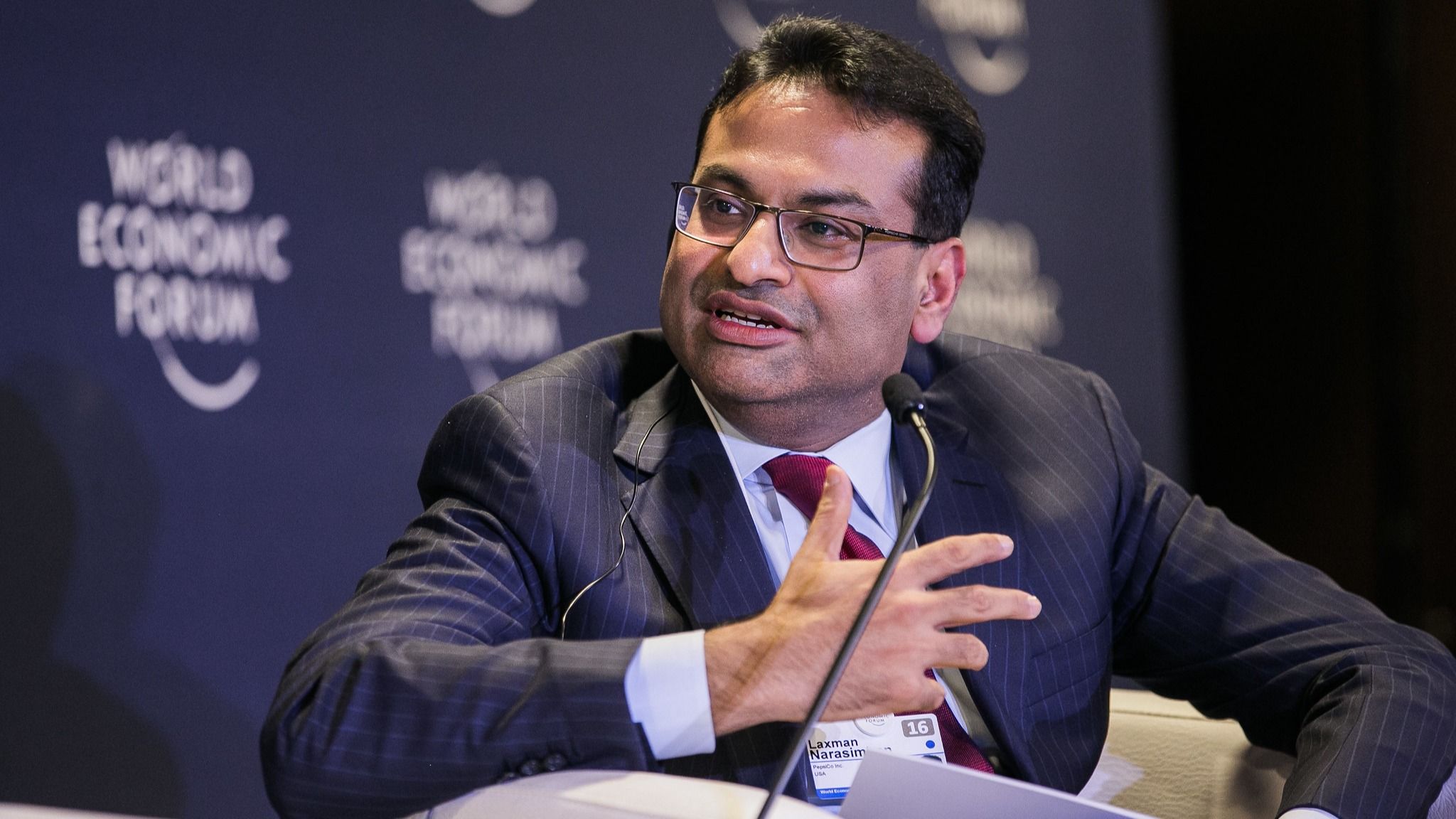Impact of Narasimhan’s Leadership at Starbucks: Laxman Narasimhan

Laxman Narasimhan, the current CEO of Starbucks, took over in April 2023, following the departure of Kevin Johnson. He inherited a company facing various challenges, including heightened competition, evolving customer preferences, and concerns about employee morale. Narasimhan’s leadership has been marked by a focus on innovation, customer experience, and employee well-being, aiming to address these challenges and drive Starbucks’ future growth.
Key Initiatives and Strategies
Narasimhan’s leadership has been characterized by a series of strategic initiatives aimed at enhancing Starbucks’ competitiveness and positioning the company for long-term success. These initiatives include:
- Investing in Digital Innovation: Narasimhan has prioritized investments in digital technologies to enhance the customer experience and drive operational efficiency. Starbucks has introduced new mobile ordering and payment features, expanded its loyalty program, and developed personalized recommendations for customers. This digital focus has been instrumental in attracting younger demographics and catering to their evolving consumption habits.
- Elevating the Customer Experience: Starbucks has focused on enhancing the in-store experience, aiming to create a more welcoming and personalized environment. This includes initiatives like offering personalized recommendations, improving the speed of service, and providing more comfortable seating arrangements. These efforts are designed to foster customer loyalty and drive repeat business.
- Strengthening Employee Engagement: Narasimhan has emphasized the importance of employee well-being and engagement. Starbucks has implemented initiatives like increased wages, improved benefits packages, and enhanced training programs. The company has also focused on creating a more inclusive and diverse work environment, fostering a sense of belonging among employees.
- Expanding Global Reach: Narasimhan has continued Starbucks’ expansion into new markets, particularly in emerging economies. This strategy aims to capitalize on the growing demand for premium coffee experiences globally and drive revenue growth. Starbucks has focused on tailoring its offerings to local preferences and partnering with local businesses to ensure successful market entry.
Effectiveness of Initiatives
The effectiveness of Narasimhan’s initiatives is still under evaluation, as he has only been in the role for a relatively short period. However, initial signs suggest that his strategies are having a positive impact. Starbucks has reported strong financial performance in recent quarters, with revenue growth exceeding expectations. Customer satisfaction scores have also shown improvement, reflecting the positive impact of initiatives aimed at enhancing the customer experience. Furthermore, employee morale has seen a notable increase, indicating that Narasimhan’s focus on employee well-being is bearing fruit.
Impact on Financial Performance
Narasimhan’s leadership has been associated with a positive impact on Starbucks’ financial performance. The company has reported strong revenue growth in recent quarters, driven by factors such as increased customer traffic, higher average transaction value, and the expansion of its global footprint. Starbucks has also demonstrated strong profitability, with its operating margins improving due to efficient cost management and operational improvements. These positive financial results suggest that Narasimhan’s strategies are contributing to Starbucks’ long-term financial sustainability.
Impact on Customer Satisfaction, Laxman narasimhan
Narasimhan’s focus on enhancing the customer experience has yielded positive results in terms of customer satisfaction. Starbucks has seen an improvement in its customer satisfaction scores, indicating that customers are appreciating the company’s efforts to create a more personalized and enjoyable experience. The company’s digital initiatives, such as its mobile ordering and loyalty program, have been particularly well-received by customers, contributing to increased convenience and personalization.
Impact on Employee Morale
Narasimhan’s commitment to employee well-being and engagement has had a positive impact on employee morale. Starbucks has seen a significant increase in employee satisfaction, with employees reporting higher levels of job satisfaction, engagement, and a sense of belonging. This improvement in employee morale is attributed to initiatives like increased wages, improved benefits packages, and a more inclusive work environment.
Narasimhan’s Vision for Starbucks’ Future

Laxman Narasimhan, Starbucks’ new CEO, has Artikeld a vision for the company’s future that focuses on innovation, customer experience, and sustainability. His strategic priorities aim to solidify Starbucks’ position as a leading global coffeehouse brand while navigating the evolving consumer landscape.
Strategic Priorities
Narasimhan’s vision for Starbucks is centered around several key strategic priorities:
- Elevating the Starbucks Experience: Narasimhan emphasizes enhancing the customer experience through personalized offerings, digital innovation, and a focus on creating a welcoming and inclusive environment. This involves leveraging technology to streamline ordering and payment processes, providing personalized recommendations, and offering unique experiences like mobile ordering and pick-up.
- Driving Operational Excellence: Narasimhan aims to improve operational efficiency by streamlining processes, optimizing supply chains, and enhancing employee training and development. This involves leveraging data analytics to optimize store operations, ensuring consistent product quality, and fostering a positive work environment for employees.
- Expanding Global Reach: Narasimhan’s vision includes expanding Starbucks’ global footprint by entering new markets and strengthening its presence in existing ones. This involves identifying growth opportunities in emerging markets, adapting to local tastes and preferences, and leveraging partnerships to accelerate expansion.
- Embracing Sustainability: Narasimhan recognizes the importance of sustainability and has committed to reducing Starbucks’ environmental footprint and promoting ethical sourcing practices. This involves setting ambitious goals for reducing waste, sourcing coffee beans sustainably, and supporting coffee farmers and communities.
Implications for Starbucks
Narasimhan’s vision has significant implications for Starbucks’ operations, brand image, and customer experience:
- Enhanced Customer Experience: The focus on personalized offerings and digital innovation is expected to create a more engaging and seamless customer experience. Starbucks is investing in technology to provide personalized recommendations, streamline ordering and payment processes, and offer unique experiences like mobile ordering and pick-up. This will cater to the evolving preferences of digitally savvy consumers and enhance customer loyalty.
- Strengthened Brand Image: By prioritizing sustainability and ethical sourcing, Starbucks aims to strengthen its brand image and appeal to consumers who value social and environmental responsibility. The company is committed to reducing its environmental footprint, sourcing coffee beans sustainably, and supporting coffee farmers and communities. This commitment will resonate with consumers who are increasingly conscious of the social and environmental impact of their purchases.
- Improved Operational Efficiency: Narasimhan’s emphasis on operational excellence is expected to improve Starbucks’ efficiency and profitability. By streamlining processes, optimizing supply chains, and enhancing employee training and development, Starbucks aims to reduce costs, improve product quality, and enhance employee productivity. This will enable the company to compete effectively in a challenging market environment.
Challenges and Opportunities
Implementing Narasimhan’s vision presents both challenges and opportunities for Starbucks:
- Competition: Starbucks faces intense competition from other coffeehouse chains and independent coffee shops. The company must continue to innovate and differentiate itself to remain competitive. This involves offering unique products and experiences, leveraging technology to enhance the customer experience, and maintaining a strong brand image.
- Economic Volatility: Global economic uncertainty can impact consumer spending and affect Starbucks’ sales. The company must navigate these challenges by managing costs effectively, offering value-oriented products, and adapting to changing consumer preferences.
- Digital Transformation: The digital landscape is constantly evolving, and Starbucks must adapt to these changes to remain relevant. This involves investing in technology to enhance the customer experience, optimize operations, and stay ahead of the competition. The company must also ensure that its digital initiatives are aligned with its overall business strategy and meet the needs of its target customers.